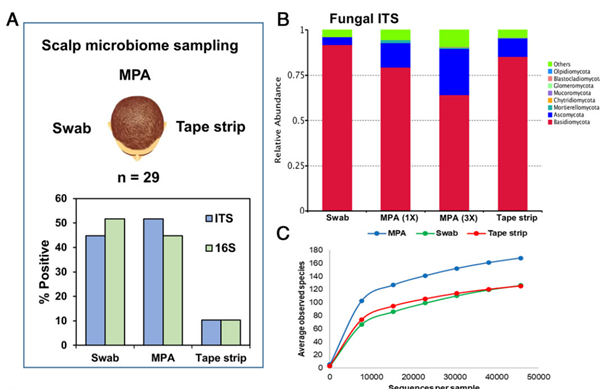Introduction: Currently, skin microbiome sampling is carried out using tools such as cotton swabs and tape strips to collect microorganisms from the skin surface. These traditional methods may not be able to detect microorganisms deep within the epidermis or in the inner epidermis. For this reason some researchers have proposed tools that allow deep sampling, namely the transepidermal microinjection array (MPA), which can capture microorganisms from the surface of the epidermis and deeper layers of the skin.

In July 2022, researchers from Singapore used the rapid customisability of3D printing to systematically optimise the MPA for human skin sampling, and their findings have been published in the Proceedings of the National Academy of Sciences under the title 'A 3D-printed transepidermal microprojection array for A 3D-printed transepidermal microprojection array for human skin microbiome sampling".
To assess the impact of the various physical properties of MPAs on microbial extraction, the researchers fabricated custom MPAs with different array sizes, densities and geometries. because these MPAs contain highly complex microstructures, they chose digital light processing (DLP) technology, a 3D printing technique capable of fast, accurate and high-resolution printing. The researchers chose to print screws, caps and cone shapes. The results showed that the cone-shaped micro-projection geometry was the most effective for microbial extraction efficacy.
In addition to the size, density and geometry of the microinjections, the depth of penetration was also an important consideration. While longer microinjections facilitate extraction of deeper microorganisms - including SCs, sebaceous glands and hair follicles - and can extend to sub-millimetre depths, they can cause discomfort and a higher risk of vascular puncture to the subject. A balance therefore needs to be struck between discomfort and deeper microbial sampling of the skin area. Considering that MPAs of 1.2 and 1.5 mm height have similar microbial extraction efficacy and that users of 1.5 mm MPAs have a higher risk of discomfort and injury, the researchers chose 1.2 mm MPAs for the follow-up study on human volunteers.
Evaluation of the sampling efficacy on human scalp showed that the optimised MPA was comparable to cotton swabs in terms of sensitivity and superior to tape strips, especially on non-standard skin surfaces. Analysed in terms of differences in species diversity, MPA was more likely to detect clinically relevant fungi than other methods. This work provides a tool for the complex field of skin microbiome sampling that has the potential to address gaps in our understanding of its role in health and disease.
Summary

This paper reports on a 3D printed fabricated MPA that was developed to address the limitations of existing skin microbiome sampling methods and has excellent utility in skin microbiome sampling as a complement to swab and strip sampling methods. 3D printing was chosen to manufacture the MPA because it allows rapid prototyping based on computer-customisable designs. Unlike traditional microforming and injection moulding techniques used to manufacture MPAs, 3D printing offers greater versatility and freedom in implementing MPA design parameters through computer-aided design (CAD) software, without the need for mould templates. In addition, the manufacture of complex MPA designs, which would otherwise be difficult to produce through micro-injection moulding, can be achieved fairly easily using 3D printing.



